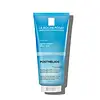La Roche-Posay Anthelios Post-UV Exposure After-Sun Lotion Versus La Roche-Posay Posthelios After-Sun Gel
What's inside
What's inside
 Key Ingredients
Key Ingredients

 Benefits
Benefits

 Concerns
Concerns

 Ingredients Side-by-side
Ingredients Side-by-side

Water
Skin ConditioningGlycerin
HumectantCaprylic/Capric Triglyceride
MaskingAlcohol Denat.
AntimicrobialButyrospermum Parkii Butter
Skin ConditioningGlyceryl Stearate Se
EmulsifyingOctyldodecanol
EmollientCetearyl Alcohol
EmollientGlyceryl Stearate Citrate
EmollientTocopherol
AntioxidantHydroxyacetophenone
AntioxidantSclerotium Gum
Emulsion StabilisingPanthenol
Skin ConditioningXanthan Gum
EmulsifyingPentylene Glycol
Skin ConditioningMentha Piperita Extract
CleansingCaprylyl Glycol
EmollientCitric Acid
BufferingGlycine Soja Oil
EmollientParfum
MaskingWater, Glycerin, Caprylic/Capric Triglyceride, Alcohol Denat., Butyrospermum Parkii Butter, Glyceryl Stearate Se, Octyldodecanol, Cetearyl Alcohol, Glyceryl Stearate Citrate, Tocopherol, Hydroxyacetophenone, Sclerotium Gum, Panthenol, Xanthan Gum, Pentylene Glycol, Mentha Piperita Extract, Caprylyl Glycol, Citric Acid, Glycine Soja Oil, Parfum
Water
Skin ConditioningOctocrylene
UV AbsorberPropylene Glycol
HumectantGlycerin
HumectantCyclopentasiloxane
EmollientTitanium Dioxide
Cosmetic ColorantButyl Methoxydibenzoylmethane
UV AbsorberDrometrizole Trisiloxane
UV AbsorberTerephthalylidene Dicamphor Sulfonic Acid
UV AbsorberTriethanolamine
BufferingIsopropyl Palmitate
EmollientStearic Acid
CleansingVp/Eicosene Copolymer
Dimethicone
EmollientAcrylates/C10-30 Alkyl Acrylate Crosspolymer
Emulsion StabilisingAluminum Hydroxide
EmollientCarbomer
Emulsion StabilisingDisodium EDTA
Glyceryl Stearate
EmollientGlycine Soja Oil
EmollientHydroxypropyl Methylcellulose
Emulsion StabilisingMethylparaben
PreservativePEG-100 Stearate
Phenoxyethanol
PreservativePropylparaben
PreservativeStearyl Alcohol
EmollientTocopherol
AntioxidantWater, Octocrylene, Propylene Glycol, Glycerin, Cyclopentasiloxane, Titanium Dioxide, Butyl Methoxydibenzoylmethane, Drometrizole Trisiloxane, Terephthalylidene Dicamphor Sulfonic Acid, Triethanolamine, Isopropyl Palmitate, Stearic Acid, Vp/Eicosene Copolymer, Dimethicone, Acrylates/C10-30 Alkyl Acrylate Crosspolymer, Aluminum Hydroxide, Carbomer, Disodium EDTA, Glyceryl Stearate, Glycine Soja Oil, Hydroxypropyl Methylcellulose, Methylparaben, PEG-100 Stearate, Phenoxyethanol, Propylparaben, Stearyl Alcohol, Tocopherol
Ingredients Explained
These ingredients are found in both products.
Ingredients higher up in an ingredient list are typically present in a larger amount.
Glycerin is already naturally found in your skin. It helps moisturize and protect your skin.
A study from 2016 found glycerin to be more effective as a humectant than AHAs and hyaluronic acid.
As a humectant, it helps the skin stay hydrated by pulling moisture to your skin. The low molecular weight of glycerin allows it to pull moisture into the deeper layers of your skin.
Hydrated skin improves your skin barrier; Your skin barrier helps protect against irritants and bacteria.
Glycerin has also been found to have antimicrobial and antiviral properties. Due to these properties, glycerin is often used in wound and burn treatments.
In cosmetics, glycerin is usually derived from plants such as soybean or palm. However, it can also be sourced from animals, such as tallow or animal fat.
This ingredient is organic, colorless, odorless, and non-toxic.
Glycerin is the name for this ingredient in American English. British English uses Glycerol/Glycerine.
Learn more about GlycerinGlycine Soja Oil comes from the soybean. Glycine Soja is native to eastern Asia.
Soybean oil is an emollient. It is rich in antioxidants and fatty acids including palmitic, stearic, oleic, and linoleic acids.
As an emollient, the fatty acids in soybean oil helps keep your skin soft and hydrated. It does so by creating a film on top that traps moisture in.
Soybean oil is also rich in vitamin E, a potent antioxidant. Vitamin E is also anti-inflammatory and provides a soothing effect.
Studies show soy may help fade hyperpigmentation from UVB. It does so by disrupting the melanin process from UVB induced skin inflammation.
This ingredient may not be malassezia folliculitis, or fungal-acne, safe.
Soybeans are rich in proteins and are part of the legume family. Foods made with soybeans include tofu, soymilk, edamame, miso, and soy sauce.
Learn more about Glycine Soja OilTocopherol (also known as Vitamin E) is a common antioxidant used to help protect the skin from free-radicals and strengthen the skin barrier. It's also fat soluble - this means our skin is great at absorbing it.
Vitamin E also helps keep your natural skin lipids healthy. Your lipid skin barrier naturally consists of lipids, ceramides, and fatty acids. Vitamin E offers extra protection for your skin’s lipid barrier, keeping your skin healthy and nourished.
Another benefit is a bit of UV protection. Vitamin E helps reduce the damage caused by UVB rays. (It should not replace your sunscreen). Combining it with Vitamin C can decrease sunburned cells and hyperpigmentation after UV exposure.
You might have noticed Vitamin E + C often paired together. This is because it is great at stabilizing Vitamin C. Using the two together helps increase the effectiveness of both ingredients.
There are often claims that Vitamin E can reduce/prevent scarring, but these claims haven't been confirmed by scientific research.
Learn more about TocopherolWater. It's the most common cosmetic ingredient of all. You'll usually see it at the top of ingredient lists, meaning that it makes up the largest part of the product.
So why is it so popular? Water most often acts as a solvent - this means that it helps dissolve other ingredients into the formulation.
You'll also recognize water as that liquid we all need to stay alive. If you see this, drink a glass of water. Stay hydrated!
Learn more about Water